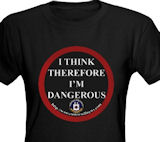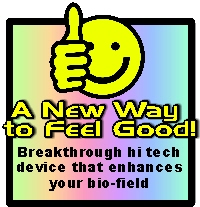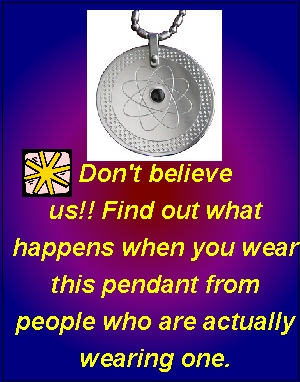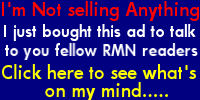Beyond the Bar Code
By Charlie Schmidt
March 2001
Within a few years, unobtrusive tags on retail products will send radio signals to their manufacturers, collecting a wealth of information about consumer habits—and also raising privacy concerns.
It's 2010, and an ordinary day on an assembly line. A bottle of root beer gets stamped with an innocuous little tag that immediately begins sending messages into cyberspace. The tag radios the soda company's Web site to report the bottle's whereabouts, allowing computers to track the bottle as it moves from the factory, through warehouses and distribution centers, and into a refrigerator at a corner drugstore. When the bottle is sold, the manufacturer is alerted and makes a new one to take its place. Finally, facing reincarnation at a recycling plant, the bottle radios its "last words" to a robotic separator that lifts it from a pile of plastic and newspaper and tosses it into a container of broken glass.
Manufacturers hoping to recoup some of the billions lost every year to theft, counterfeit, and depleted stocks have been closely watching a technology that promises to track the locations of individual products, from perfume bottles to car parts, in real time. At the heart of this scenario is a little device called a "radio frequency identification tag"—a silicon chip that boots up and transmits a signal when exposed to the energy field of a nearby reader. The ultimate goal is to put a radio tag on virtually every manufactured item, each tracked by a network of millions of readers in factories, trucks, warehouses and homes , transforming huge supply chains into intelligent, self-managing entities. Dick Cantwell, vice president of global business management at Gillette says that the devices for reading the tags are "going to be a ubiquitous part of construction, whether you're building stores or homes....We see this as a tremendous opportunity and we intend to make full use of the technology as it becomes available."
The radio tag has been around for more than half a century, largely relegated to specialized industries. Some of its first uses were for tracking livestock and government freight-train cargo; today highway tolls throughout the United States and abroad are outfitted with readers that pick up signals from a tag in your car as you drive by. Insiders in this field believe the technology won't blanket the consumer market, though, until someone produces a radio tag costing in the neighborhood of a penny—an assumption that has sent engineers back to the drawing board.
When the penny barrier is finally broken, manufacturers hope to use these tags as a next-generation bar code linking manufactured items to online databases containing product-specific information. Steve Halliday, vice president of technology at AIM, a trade association for manufacturers of tagging technology, says, "If I talk to companies and ask them if they want to replace the bar code with these tags, the answer can't be anything but yes. It's like giving them the opportunity to rule the world."
Tale of the tape: Motorola's Noel Eberhardt wants to create the lowest-cost radio tag possible.
Designed to speed up checkout counters and eliminate the drudgery of physical price marking, the bar code has come a long way since 1974—when it was introduced into retail sales on a pack of chewing gum in an Ohio supermarket. Far exceeding initial expectations, five billion codes are scanned every day in 140 countries. But even as retailers tip their hat to the bar code's success, few deny that a more sophisticated kind of tagging would be a great improvement. Bar codes identify only classes of products, not individual items, whereas a digital numbering scheme built into a tag has the capacity to identify every single manufactured item that is currently made and sold. Bar codes also have to be deliberately scanned at specific orientations; tags need only be within a reader's range. "Once the infrastructure is in place, managing inventory in warehouses and retail stores could become highly automated," says Alan Haberman, co-founder and governor-at-large of the Uniform Code Council, the organization that administers the bar code.
While attractive in concept, saturating the global supply chain with radio tags and readers poses huge challenges—chief among them the cost of the tag, typically more than a dollar. That's fine for a choice Hereford steer but much too expensive for consumer items. The high cost results from the silicon chip and from the antenna, a pricey metal coil that serves two functions. First, it uses a magnetic field emitted by the reader to power the chip. Then, when the chip is powered, the antenna transmits data from the chip back to the reader. Most manufacturers of radio tags, including Texas Instruments and Everett, WA-based Intermec, have developed tags based on this model, which is known as "inductive coupling."
It is the cost of the inductively coupled tags, hovering around a dollar, that lit a fire under Noel Eberhardt, vice president for advanced technology at Motorola. "The words that burned in my ears were 'this is interesting technology, but it's too expensive,'" Eberhardt says. "So I set out to build the lowest-cost silicon chip possible. And my first objective was to get rid of that coil."
In late 1995, Eberhardt started collaborating with Neil Gershenfeld, director of the MIT Media Lab's Physics and Media Group, on a cost-effective design. Eberhardt experimented with "capacitive coupling," an alternative method in which the tag is powered not by magnetic forces but by electrostatic charges emitted by the reader, charges similar to those that cause your clothes to stick together when you pull them out of the dryer. Using this mechanism, he found that coil antennas could be replaced with conductive carbon ink printed on paper which would pick up the electrostatic charges from the reader and create a current across the chip. The silicon chip—itself less than three millimeters square—could be mounted atop a sheet of paper lined with the special ink.
Without the metal coil, the cost of the tag dropped to less than 50 cents. The added flexibility of the paper material also meant Eberhardt's prototype tag could function when bent, cut or crumpled, as long as a remnant of the carbon ink-based antenna remained connected to the chip. Eberhardt and Gershenfeld announced their innovation in February 1999. Within weeks of the announcement, Motorola released the first and so far the only capacitively coupled tag.
[follow link to view this graphic] In order to communicate with nearby readers, conductive carbon ink on the tag's surface intercepts a reader's electric field, generating a current (orange) between the tag and the reader to power the chip. The tag then transmits data (green) stored on the chip to the reader, which decodes it and passes it on to a computer.
While Eberhardt's work moved the field closer to the penny tag, one lingering issue is whether low-cost tags will have a long enough range to make them practical. The range of Motorola's tag, for example, is limited to slightly more than a centimeter. Painting the antenna over an entire box extends the range to about 60 centimeters, but this won't help much on something as small as a can of tuna fish. Higher-cost tags, like Intermec's inductive tag, can transmit signals up to five meters but at a price beyond the reach of the typical consumer market. Echoing industry sentiments, Winston Guillory, vice president of the tag's business unit at Intermec, predicts that short-term applications will probably be limited to warehouse, rather than retail, management. And as for the penny tag, Guillory admits to a certain skepticism. "You hear all this talk about it," he says. "But it's never been delivered."
Despite the skepticism, many companies are in hot pursuit of the penny tag and its glittering potential payoff. Steve Van Fleet, International Paper's program manager for e-packaging, says the technology will benefit his company's clients by eliminating the "shrinkage" due to lost, stolen or spoiled goods that consumes three to five percent of everything they make. Last year, International Paper partnered with Motorola to use their radio tag on some of the 8.6 million metric tons of corrugated crates, boxes and other packages the paper company makes annually. Explains Van Fleet, "Say I have 5,000 cases on a truck that's supposed to be going to Cincinnati, but the driver goes to St. Louis and diverts 1,000 cases to the black market. Without the tags, we have limited visibility to detect this. But if we put readers in the truck, I can inventory these cases remotely using geographic information systems software on a laptop."
In addition to reducing shrinkage, such identification technology could help companies create a more realistic picture of how their products move through the supply chain and into the world. At Gillette, for example, sales information is transferred across warehouses, distribution centers and retail stores in batches by telephone, fax or e-mail. Since the information isn't matched with demand in real time, manufacturers often get stuck making too little, then too much, product in an attempt to keep up with the market. Economists call this the "bullwhip effect."
Getting the cost of the radio tag down to a penny isn't the only major technology challenge in this field. Another is linking the tags to the Web. That effort is being led by an MIT-based consortium of academic and industry partners called the Auto-ID Center. Kevin Ashton, the center's director, anticipates the arrival of the penny tag in five years and says he is now focusing, not on the tag, but on how to create a network architecture that squeezes as much profit out of it as possible. "And profit," says Sanjay Sarma, research director at the center, "will ultimately depend on a system that allows for the seamless flow of data throughout the entire supply chain."
The system will have to scale to unprecedented proportions, potentially handling trillions of items annually, making it one of the largest systems ever built. "It's an enormous undertaking," Ashton concedes. The Auto-ID Center, formed in 1999, with 11 corporate members including Gillette, Procter & Gamble, International Paper, Sun Microsystems and the Uniform Code Council, is simplifying the task by hooking on to an existing system: the Internet. "Initially, it was expected that tags would need quite a lot of memory," recalls Ashton. But Sarma, along with Sunny Siu and Auto-ID Center co-director David Brock, designed a cost-saving system that makes tags extremely simple and transfers all the information about a product to the Web—a description of its constituent parts, for example, or a record of its trajectory through the supply chain. The only information actually on the tag is an Auto-ID Center invention called the "Electronic Product Code," a counterpart of the bar code that assigns a searchable number to each object (see companion article, "What's My Number?").
The Object Naming Service, developed at MIT's Auto-ID Center, routes radio tag information from (1) warehouses, (2) store shelves, (3) microwave ovens and (4) recycling facilities back to the (5) manufacturer. That way, Acme Pizza knows when stock is low, when to send cooking instructions over the Internet to a customer's microwave oven and when to make another pizza to replace the one that's just been consumed.
According to Cantwell, Gillette and many other companies envision using tags to download promotional material to displays mounted on store shelves, or even to shoppers' handheld computers. By simply scanning a product in front of a networked reader linked to a computer monitor, customers could one day retrieve user instructions, specifications and other product information to help them decide, for instance, which toothbrush is more flexible or which soup has less sodium.
Talk to Cantwell awhile longer, and he's likely to bring up Gillette's next goal: using readers to track consumer use of its products at home. Gillette sees the technology engaged in direct consumer marketing, which would rely on personalized information obtained from readers installed where products are actually used—in your refrigerator, say. While this scenario may be decades away, the coming era of ubiquitous computing could bring Internet access to every household appliance. "Smart" fridges could monitor tagged products, learn your food preferences and shopping schedule, and then buy all your groceries for you. And, if you let them, companies like Gillette will monitor personal use of their products. Throw one of their razors into the trash, and another one would be on its way.
That's a vision that, predictably, has marketers salivating. But are you ready for a system that surrounds you and monitors your family's day-to-day activities? Watchdog organizations like the Center for Democracy and Technology, a Washington, DC-based public interest group focused on civil liberties, worry about new challenges to privacy. "Imagine putting a frozen pizza into a microwave that downloads cooking instructions from Pizza Hut," suggests the group's staff counsel, Alan Davidson. "Is Pizza Hut going to track the server of that microwave? Will they find out where and when you bought the pizza, and are they logging this transaction? Suddenly they have a detailed record that describes your personal activities."
One of the greatest challenges facing the creators of such an infrastructure, predicts Davidson, will be finding ways to allow consumers to opt in or out of the system as it becomes more pervasive. "It's not clear how that's going to happen," he says. "But it's important if companies want to prevent a public backlash against these systems."
In some ways, the technology itself has certain limitations that minimize privacy concerns. The range of a tag seldom exceeds five meters, nor can the tags be read through walls or other thick barriers. What's more, Electronic Product Codes identify objects, not people. The only way for a manufacturing company to link the two is through an automatic debiting system or credit card, for which the consumer would most likely have to give consent. Sarma acknowledges that privacy and security are concerns at the Auto-ID Center, adding that industrial uses, for which these issues are minimal, are certain to emerge before consumer applications. "Security concerns will be resolved long before we get to the consumer," he says. "We are bringing a lot of technical and organizational resources to bear on this issue."
Before implementing the tagging system, the Auto-ID Center will have to seek consensus from the Uniform Code Council and its European counterpart, a process that could take two to five years. While the online infrastructure now being created could set the stage for an explosion of radio-based identification technology across the consumer marketplace, in all likelihood the change will start slowly. First in warehousing, out of the average consumer's sight. Then among some isolated and expensive retail items worthy of the investment. Until, finally, a Wal-Mart salesman shows you the latest refrigerator on the market, complete with Internet connectivity, the ability to analyze its own contents—and optional online access to your wallet.
Charlie Schmidt is a freelance writer based in Portland, Maine, specializing in science and technology. He holds a Master's of Science in Public Health from the University of Massachusetts.
Companion Articles:
What's My Number
Researchers at MIT's Auto-ID Center have developed a numbering scheme called the "Electronic Product Code" that will identify consumer products individually—not just by type, as today's Universal Product Code does. Stored in the memory of the tag's chip, the code uses 96 bits of information: an 8-bit header, two sets of 24 bits each identifying the manufacturer and product type, and a 40-bit serial number. Ninety-six bits can encode enough information to uniquely identify trillions upon trillions of objects. When readers lining warehouse or retail store shelves intercept a tag's radio signal, which contains the product code, they use the numbering scheme to direct networked computers to an Internet database called the "Object Naming Service." Designed and supported by the Auto-ID Center, the database system reads the portion of the code identifying the manufacturer and directs computers to the manufacturer's server address.
In order for tags to communicate with different servers regardless of the type of computer or software encountered, engineers at MIT are also developing a format called "Product Markup Language." In the future, files written in this format will contain information on things like shipping, expiration dates, recycling and advertising. Instructions for machines that change a product in some way could also be included in these files. For example, a specific frozen-food file would have cooking instructions for microwave ovens. A dynamic data file could describe physical changes that occur as a product ages or is consumed. So while the Electronic Product Code initially identifies a physical item, the Product Markup Language describes the item, and the Object Naming Service links the two, communicating product information between a manufacturer and an aisle in your local supermarket.
Tag Teams
Some companies manufacturing radio tags.
COMPANY LOCATION APPLICATIONS
BiStar Technology Oxfordshire, UK Warehouse management, article tracking, building-access control
Intermec Everett, WA Supply-chain management, vehicle tracking, access control, mobile commerce
Motorola Rolling Meadows, IL Warehouse management, ski-lift tickets, building access, high-value consumer goods tracking
Philips Semiconductors Eindhoven, Neth. Airline baggage tracking, supply-chain management, tracking of retail articles
SCS San Diego, CA Airline baggage tracking, warehouse management, garment tracking
Texas Instruments Dallas, TX Tracking books in libraries, airline baggage handling, express parcel identification






































